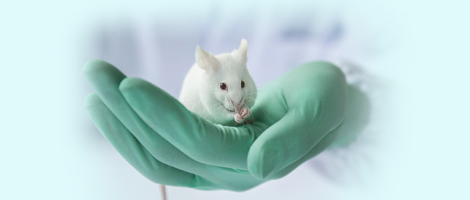| 1 |
THORNE L G, GOODFELLOW I G. Norovirus gene expression and replication[J]. J Gen Virol, 2014, 95(Pt 2):278-291. DOI: 10.1099/vir.0.059634-0 .
|
| 2 |
PRASAD B V, HARDY M E, JIANG X, et al. Structure of Norwalk virus[J]. Arch Virol Suppl, 1996, 12: 237-242. DOI:10.1007/978-3-7091-6553-9_25
|
| 3 |
CANNON J L, BARCLAY L, COLLINS N R, et al. Genetic and epidemiologic trends of Norovirus outbreaks in the United States from 2013 to 2016 demonstrated emergence of novel GⅡ.4 recombinant viruses[J]. J Clin Microbiol, 2017, 55(7):2208-2221. DOI: 10.1128/JCM.00455-17 .
|
| 4 |
VAN BEEK J, DE GRAAF M, AL-HELLO H, et al. Molecular surveillance of norovirus, 2005-16: an epidemiological analysis of data collected from the NoroNet network[J]. Lancet Infect Dis, 2018, 18(5): 545-553. DOI: 10.1016/S1473-3099(18)30059-8 .
|
| 5 |
AHMED S M, HALL A J, ROBINSON A E, et al. Global prevalence of norovirus in cases of gastroenteritis: a systematic review and meta-analysis[J]. Lancet Infect Dis, 2014, 14(8):725-730. DOI: 10.1016/S1473-3099(14)70767-4 .
|
| 6 |
PATEL M M, HALL A J, VINJÉ J, et al. Noroviruses: a comprehensive review[J]. J Clin Virol, 2009, 44(1):1-8. DOI: 10.1016/j.jcv.2008.10.009 .
|
| 7 |
BLANTON L H, ADAMS S M, BEARD R S, et al. Molecular and epidemiologic trends of caliciviruses associated with outbreaks of acute gastroenteritis in the United States, 2000-2004[J]. J Infect Dis, 2006, 193(3):413-421. DOI:10-1086/499315 .
|
| 8 |
HALL A J, LOPMAN B A, PAYNE D C, et al. Norovirus disease in the United States[J]. Emerg Infect Dis, 2013, 19(8):1198-1205. DOI: 10.3201/eid1908.130465 .
|
| 9 |
WOBUS C E, THACKRAY L B, H W 4th VIRGIN. Murine norovirus: a model system to study norovirus biology and pathogenesis[J]. J Virol, 2006, 80(11):5104-5112. DOI:10.1128/JVI.02346-05 .
|
| 10 |
OHSUGI T, MATSUURA K, KAWABE S, et al. Natural infection of murine norovirus in conventional and specific pathogen-free laboratory mice[J]. Front Microbiol, 2013, 4:12. DOI: 10.3389/fmicb.2013.00012 .
|
| 11 |
HSU C C, WOBUS C E, STEFFEN E K, et al. Development of a microsphere-based serologic multiplexed fluorescent immunoassay and a reverse transcriptase PCR assay to detect murine Norovirus 1 infection in mice[J]. Clin Diagn Lab, 2005, 12(10):1145-1151. DOI: 10.1128/CDLI.12.10.1145-1151. 2005 .
|
| 12 |
PRITCHETT-CORNING K R, COSENTINO J, CLIFFORD C B. Contemporary prevalence of infectious agents in laboratory mice and rats[J]. Lab Anim, 2009, 43(2):165-173. DOI: 10.1258/la.2008.008009 .
|
| 13 |
袁文, 张钰, 刘忠华, 等. 广东省实验小鼠自然感染鼠诺如病毒的调查[J]. 中国比较医学杂志, 2010, 20(2): 78-82. DOI: 10.3969/j.issn.1671-7856.2010.02.019 .
|
|
YUAN W, ZHANG Y, LIU Z H, et al. Investigation of natural murine Norovirus in in laboratory mice in Guangdong Province[J]. Chin J Comp Med, 2010, 20(2): 78-82. DOI: 10.3969/j.issn.1671-7856.2010.02.019 .
|
| 14 |
刘芹. 上海地区小鼠诺瓦克病毒的感染状况及病毒的分离和表达[D]. 上海: 复旦大学, 2014.
|
|
LIU Q. Infection of Murine Norovirus and Expression of Isolated Viruses in Shanghai Area [D]. Shanghai: Fudan University, 2014.
|
| 15 |
田娜, 何丽雯, 曾莉, 等. 重庆地区小鼠诺如病毒的感染及其对免疫功能影响的初步研究[J]. 重庆医科大学学报, 2019, 44(12):1635-1641. DOI: 10.13406/j.cnki.cyxb.002256 .
|
|
TIAN N, HE L W, ZENG L, et al. Preliminary study on the infection of mouse norovirus and its effect on immune function in Chongqing[J]. J Chongqing Med Univ, 2019, 44(12):1635-1641. DOI: 10.13406/j.cnki.cyxb.002256 .
|
| 16 |
王翠娥, 陈立超, 周倩, 等. 实验大鼠和小鼠多种病毒的血清学检测结果分析[J]. 实验动物科学, 2014, 31(2):20-24. DOI: 10.3969/j.issn.1006-6179.2014.02.005 .
|
|
WANG C E, CHEN L C, ZHOU Q, et al. Testing of multiple viral antibodies in laboratory rats and mice[J]. Lab Animal Sci, 2014, 31(2):20-24. DOI: 10.3969/j.issn.1006-6179.2014.02.005 .
|
| 17 |
KARST S M, WOBUS C E, LAY M, et al. STAT1-dependent innate immunity to a Norwalk-like virus[J]. Science, 2003, 299(5612):1575-1578. DOI:10.1126/science.1077905 .
|
| 18 |
HENDERSON K S. Murine norovirus, a recently discovered and highly prevalent viral agent of mice[J]. Lab Anim (NY), 2008, 37(7):314-320. DOI: 10.1038/laban0708-314 .
|
| 19 |
MÄHLER M, KÖHL W. A serological survey to evaluate contemporary prevalence of viral agents and Mycoplasma pulmonis in laboratory mice and rats in western Europe[J]. Lab Anim (NY), 2009, 38(5):161-165. DOI: 10.1038/laban 0509-161 .
|
| 20 |
XIANG Z G, TIAN S N, TONG W, et al. MNV primarily surveillance by a recombination VP1-derived ELISA in Beijing area in China[J]. J Immunol Methods, 2014, 408:70-77. DOI: 10.1016/j.jim.2014.05.007 .
|
| 21 |
MUMPHREY S M, CHANGOTRA H, MOORE T N, et al. Murine norovirus 1 infection is associated with histopathological changes in immunocompetent hosts, but clinical disease is prevented by STAT1-dependent interferon responses[J]. J Virol, 2007, 81(7):3251-3263. DOI:10.1128/JVI.02096-06 .
|
| 22 |
KARST S M, WOBUS C E. Viruses in rodent colonies: lessons learned from murine noroviruses[J]. Annu Rev Virol, 2015, 2(1):525-548. DOI: 10.1146/annurev-virology-100114-055204 .
|
| 23 |
LENCIONI K C, SEAMONS A, TREUTING P M, et al. Murine norovirus: an intercurrent variable in a mouse model of bacteria-induced inflammatory bowel disease[J]. Comp Med, 2008, 58(6):522-533.
|
| 24 |
CADWELL K, PATEL K K, MALONEY N S, et al. Virus-plus-susceptibility gene interaction determines Crohn's disease gene Atg16L1 phenotypes in intestine[J]. Cell, 2010, 141(7):1135-1145. DOI: 10.1016/j.cell.2010.05.009 .
|
| 25 |
THACKRAY L B, WOBUS C E, CHACHU K A, et al. Murine noroviruses comprising a single genogroup exhibit biological diversity despite limited sequence divergence[J]. J Virol, 2007, 81(19):10460-10473. DOI:10.1128/JVI.00783-07 .
|
| 26 |
HSU C C, WOBUS C E, STEFFEN E K, et al. Development of a microsphere-based serologic multiplexed fluorescent immunoassay and a reverse transcriptase PCR assay to detect murine norovirus 1 infection in mice [J]. Clin Diagn Lab Immunol, 2005, 12(10):1145-1151.DOI:10.1128/CDLI.12.10.1145-1151.2005 .
|
| 27 |
HSU C C, RILEY L K, WILLS H M, et al. Persistent infection with and serologic cross-reactivity of three novel murine noroviruses [J]. Comp Med, 2006, 56(4): 247-251.
|
| 28 |
向丹丹, 魏晓锋, 胡建华, 等. RT-PCR检测实验小鼠自然和实验感染鼠诺如病毒[J]. 上海交通大学学报(农业科学版), 2013, 31(3): 63-69. DOI: 10.3969/J.ISSN.1671-9964.2013.03.011 .
|
|
XIANG D D, WEI X F, HU J H, et al. Detection of murine Norovirus from naturally and experimentally infected laboratory mice by RT-PCR method[J]. J Shanghai Jiaotong Univ Agric Sci, 2013, 31(3): 63-69. DOI: 10.3969/J.ISSN.1671-9964.2013.03.011 .
|
| 29 |
李晓波, 付瑞, 王淑菁, 等. 小鼠诺如病毒感染实验小鼠的抗体变化规律分析[J]. 实验动物与比较医学, 2021, 41(4):343-350. DOI: 10.12300/j.issn.1674-5817.2020.127 .
|
|
LI X B, FU R, WANG S J, et al. Analysis of antibody changes in laboratory mice infected with murine Norovirus[J]. Lab Anim Comp Med, 2021, 41(4):343-350. DOI: 10.12300/j.issn.1674-5817.2020.127 .
|
| 30 |
肖建鹏, 马莉珍, 刘姗, 等. 实验小鼠感染鼠诺如病毒的检测[J]. 热带医学杂志, 2011, 11(4):392-394, 403.
|
|
XIAO J P, MA L Z, LIU S, et al. Detection of murine noroviruses from laboratory mice[J]. J Trop Med, 2011, 11(4):392-394, 403.
|
| 31 |
COMPTON S R. Prevention of murine norovirus infection in neonatal mice by fostering[J]. J Am Assoc Lab Anim Sci, 2008, 47(3):25-30.
|
| 32 |
BUXBAUM L U, DERITIS P C, CHU N S, et al. Eliminating murine norovirus by cross-fostering[J]. J Am Assoc Lab Anim Sci, 2011, 50(4):495-499.
|
| 33 |
KIM H, BANG J, BAEK S H, et al. Eliminating murine Norovirus, Helicobacter hepaticus, and intestinal protozoa by embryo transfer for an entire mouse barrier facility[J]. Exp Anim, 2022, 71(1):28-35. DOI: 10.1538/expanim.21-0026 .
|
| 34 |
KASTENMAYER R J, PERDUE K A, ELKINS W R. Eradication of murine norovirus from a mouse barrier facility[J]. J Am Assoc Lab Anim Sci, 2008, 47(1):26-30.
|
| 35 |
PARK G W, LINDEN K G, SOBSEY M D. Inactivation of murine norovirus, feline calicivirus and echovirus 12 as surrogates for human norovirus (NoV) and coliphage (F+) MS2 by ultraviolet light (254 nm) and the effect of cell association on UV inactivation[J]. Lett Appl Microbiol, 2011, 52(2):162-167. DOI: 10.1111/j.1472-765x.2010.02982.x .
|
| 36 |
WIELICK C, LUDWIG-BEGALL L F, DAMS L, et al. The use of germicidal ultraviolet light, vaporised hydrogen peroxide and dry heat to decontaminate face masks and filtering respirators contaminated with an infectious norovirus[J]. Infect Prev Pract, 2021, 3(1):100111. DOI: 10.1016/j.infpip. 2020.100111 .
|







 ), 吕军苹2,3, 柯跃华2, 王长军1,2, 郭金鹏2(
), 吕军苹2,3, 柯跃华2, 王长军1,2, 郭金鹏2( )(
)( )
)
 ), Junping LU2,3, Yuehua KE2, Changjun WANG1,2, Jinpeng GUO2(
), Junping LU2,3, Yuehua KE2, Changjun WANG1,2, Jinpeng GUO2( )(
)( )
)